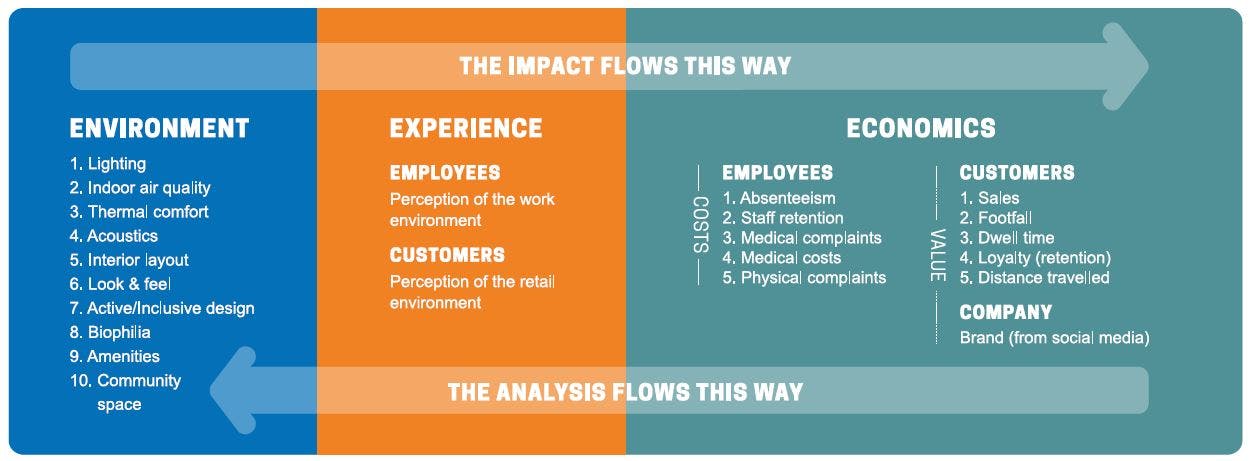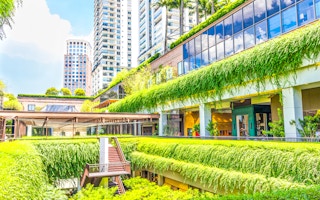Retail shop owners who include sustainable features such as natural light, greenery, and ample ventilation in their stores can expect happier staff and customers, and also higher profits, a new report by the World Green Building Council (WGBC) has found.
To continue reading, subscribe to Eco‑Business.
There's something for everyone. We offer a range of subscription plans.
- Access our stories and receive our Insights Weekly newsletter with the free EB Member plan.
- Unlock unlimited access to our content and archive with EB Circle.
- Publish your content with EB Premium.
Launched on Monday, the industry body’s report, titled, Health, Wellbeing and Productivity in Retail: The Impact of Green Buildings on People and Profit, discovered that while many retailers know that sustainable shop design and management can improve their business performance, they are slow to implement changes in their stores.
The report aimed to help retailers cash in on this missed opportunity by giving them a toolkit which they can use to quantify the value of sustainability on people’s well-being and ultimately, sales.
Terri Wills, chief executive officer, WGBC, said that drab “grey box” stores - simple rooms in enclosed malls - are a dying trend, and more companies are striving to create a better shopping environment for consumers.
The report, which was led by the UK Green Building Council aims to “empower retailers to look within their own properties to understand and monetise how better, more sustainable physical environments can potentially drive profit”, she noted.
She added that in doing so, WGBC aims to “ultimately strengthen the business case for greener, healthier buildings”.
The report is part of WGBC’s “Better Places for People” campaign, an initiative which aims to create demand for sustainable buildings by highlighting how they improve people’s well-being and lives.
WGBC in its report noted that research has long shown that stores with more sustainable features such as greenery and natural ventilation perform better economically.
Back in 1993 for example, American retail giantWal-Mart developed a concept store in which only half of the store was day lit. It found that in those naturally lit areas, sales per square foot were significantly higher.
In 2002, the International Council of Shopping Centres found that lifestyle centres - that is, connected sets of uncovered stores with pedestrianised walkways - performed better economically than conventional malls.
To help retailers understand how these trends can boost their own performance and develop strategies to maximise sustainability and profits, the WGBC report presented a ‘Retail Metrics Framework’.

Retail Metric Framework. Image: WGBC
The framework lays out three sets of indicators that store owners should measure: environmental metrics such as lighting and indoor air quality; how employees and customers perceive the shop’s impact on well-being, and economic figures such as employee retention and absenteeism, as well as sales numbers.
Companies can use this framework in multiple ways, said WGBC. For example, they can identify stores which have undergone renovations and compare their financial results to understand the economic impact of refurbishment.
Or, a retail chain can tabulate the data for all its stores, and identify the correlations between shop performance, sustainability features, and customer experiences.
“
It is no accident that this framework begins and hinges upon better economic performance, because until that can be demonstrated, sustainability may be regarded by some as an add-on expense.
‘Health, Wellbeing and Productivity in Retail: The Impact of Green Buildings on People and Profit report, World Green Building Council
WGBC piloted these ideas with some retailers, who were members of the report’s task group, prior to the report launch, and found that the system helps companies uncover new, strategically useful data. Retailers in this task group included UK chains John Lewis, Marks & Spencer, and Australian supermarket Stockland.
WGBC said its retail framework also helps integrate sustainability into the overall business strategy by showing the clear links between sustainability and a store’s profitability.
Said WGBC in its report: “It is no accident that this framework begins and hinges upon better economic performance, because until that can be demonstrated, sustainability may be regarded by some as an add-on expense”.
Emerging technologies, such as environmental sensors, mobile applications, and even tracking cell-phone signals are some tools that retailers can use to calculate the metrics outlined in the framework, noted the report. It added that as these technologies evolve, the framework will only get more accurate.
John Alker, policy and campaign director, UK GBC, noted that this report should be a “wake-up call” for retailers, and those with a stake in the retail property sector.
“They are sitting on a potential gold-mine of data, which can help cement the business case for investing in healthy, greener stores,” he added.








